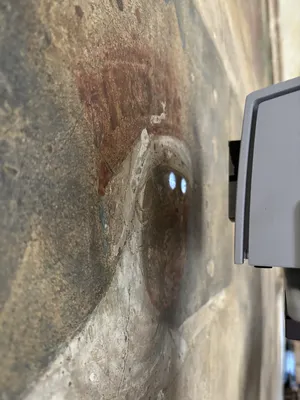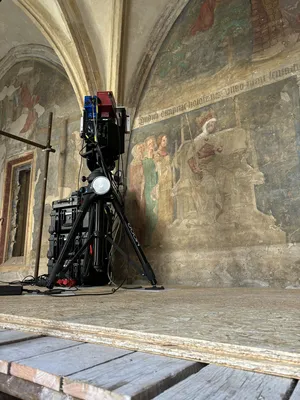Unveiling the Heritage of the Emmaus Monastery (Prague): In-Situ Multi-Analytical Investigation of the Mural Paintings from Macro to Micro Perspectives
The Gothic wall paintings from the 14th century in the Emmaus Monastery in Prague are of exceptional importance due to their unique iconography and high artistic quality. The monastery is part of the Historic Centre of Prague, a UNESCO World Heritage Site, highlighting its cultural and historical significance.
Unfortunately, the surfaces of these large-format murals exhibit extensive alterations, resulting from both environmental degradation and previous conservation interventions. To support their preservation, a thorough condition survey—along with the characterization of original materials and past restoration substances—is today of paramount importance.


The DBU-funded project “Concept for Preventive Conservation, Securing and Preservation of the Mural Painting Cycle in the Cloister of the Emmaus Monastery in Prague” aims to develop a comprehensive conservation strategy for the mural paintings. ABK Stuttgart, in cooperation with MPA Stuttgart and artIMAGING Berlin, is primarily responsible for the non-destructive analyses in the project. The project adopts an in-situ multi-method approach that combines both punctual and imaging techniques for material investigation. Within this framework, the insiTUMlab contributes its full suite of advanced analytical tools, offering access to HSI, MA-XRF, Raman, and ER-FTIR spectroscopy to shed light on the materials present on the painting surfaces. Imaging methods inform the targeted selection of points for detailed spot measurements, while the results of those spot analyses, in turn, validate and deepen the interpretation of the imaging data. This integrated workflow supports a deeper understanding of the mural paintings’ material composition, their state of preservation, and their cultural significance.

